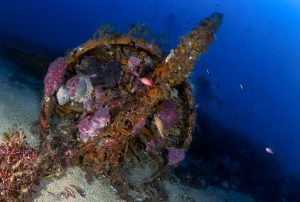In Italy, a place of culture, art and even religion, cathedrals are the protagonists of the tourist itineraries of those who come to visit Italy. In these magical places, standing for centuries, man finds that atmosphere of peace built by the hands of the past. And while people pass by, the cathedrals remain, silent witnesses of human ingenuity and faith.
1. CATHEDRAL OF SIENA (TUSCANY)One of the main Italian Gothic cathedrals opens our ranking. The internal structure welcomes visitors in a riot of black and white, the colors of the city. The floor, divided into 56 squares and continuously restored, will literally leave you breathless. The building, built in 1220 according to the dictates of the Romanesque-Gothic architectural style, is closely linked to the tradition of the Palio di Siena. In August, in fact, the winning district goes inside the cathedral with the cloth, the “cencio”, the victory trophy, singing the Te Deum of thanks to Our Lady of the Assumption. 2. CATHEDRAL OF MILAN (LOMBARDY)A mix of architectural styles, from Gothic to Neoclassical, stands out in the sky of Italy, and dominates the main postcards from Italy since 1386. The symbol of Milan, with its famous Madonnina, and the sculptures and stained glass windows that abound in left and right. In November, during the celebrations dedicated to Saint Charles Borromeo, the building becomes a museum, with the display of 56 large canvases, the most important pictorial cycle of Lombard Baroque, the “Quadroni di San Carlo”, which tell of life and miracles of the Milanese bishop. On the main altar, the most precious relic of the Cathedral, the nail of the True Cross, the Sacred Nail, stands out. It is said that it was Saint Helena who found it, using it as the bit of Constantine I’s horse. A red light is aimed at the important relic, which makes it visible from every point of the building. The nail is taken from its case, the “nivola”, a mechanized lift, and shown to the faithful every 3rd of May.3. ST. MARK’S BASILICA, VENICE (VENETO)Columns, friezes, marbles, sculptures and gold: the treasures brought by the Venetian merchants from the trades in the East are all here. Built in 1063 with bare materials, i.e. obtained from ancient demolished buildings, this Italian Gothic cathedral was enriched with furnishings of great prestige during the sacking of Constantinople, which took place during the Fourth Crusade. The most famous work of art contained within is the sculptural group depicting the Quadriga with horses in bronze and silver, right above the central portal, similar to those that stood on the triumphal arches of antiquity. The only remaining example in the world of this famous representation.4. ST. PETER’S BASILICA, ROME (VATICAN CITY – LAZIO)A Renaissance and Baroque style jewel that was born in 1506. In addition to being a monumental basilica, San Pietro in Vaticano is also one of the largest buildings in the world, which can hold up to 60,000 faithful. The cathedral can be visited along its perimeter and is connected to the Vatican Palaces by an elevated corridor and the Scala Regia. Long naves, 45 altars and 11 chapels, which house masterpieces of inestimable historical, artistic and cultural value. The whole world stops to admire the dome frescoed by Michelangelo Buonarroti, the splendid Pietà by Michelangelo, the prestigious Baldacchino di San Pietro and the papal altar by Bernini.5. CATHEDRAL OF SANTA MARIA DEL FIORE, FLORENCE (TUSCANY)White marble from Carrara, green from Prato, red from Maremma and Florentine terracotta: high quality materials to give life in 1296 to the main cathedral of Florence. The facade and the interior tell of the different styles of Italian art, from Gothic to Renaissance. There are many works dedicated to illustrious citizens and Florentine military commanders. Everyone will notice Dante holding the Divine Comedy, the city’s cultural symbol. Inside the dome, the sun is studied through a gnomon hole that provides a projection of the star on the shadowed surface of the cathedral floor.













